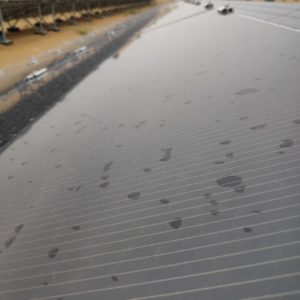Designing an optimized solar system involves considering various factors, including the cost of the modules, the value of the generated electricity, and the location of the array. While some designers may not think rigorously about optimization, it is important to understand how changing different variables can impact the performance of the system. A basic optimization exercise involves changing a variable and trying to maximize an objective, such as “If I change X, does Y improve?” A deeper understanding of solar optimization also takes into account inputs such as module cost, electricity value, and array location. This is why solar PV professionals use solar PV simulation software.
What is a Solar PV Software?
To get the estimated solar energy yield of a PV system, creating a computer simulation is required. This can be done by utilizing solar PV software. It is an application wherein the user inputs the following information as listed below. As a result, they will be able to forecast the energy production of a PV system.
Solar PV (photovoltaic) software is a type of computer program that is used to design, simulate, and analyze solar PV systems. This software allows users to model the performance of a solar PV system under different conditions, such as varying levels of solar irradiance, temperature, and shading. It can also be used to optimize the design of the system, to calculate the expected energy output, and to evaluate the financial feasibility of the project. A solar PV software is an important tool for engineers, architects, and other professionals who are involved in the design and installation of solar PV systems.
Solar PV Software Inputs:
- Project/site location
- Quantity, and specifications of solar PV modules and inverters
- Configuration of solar PV Strings
- Solar PV tilt angle and azimuth
- The total cost of the project
- Electricity costs/tariff from utilities
- Battery/electrical storage specifications and others
Solar PV Software Outputs:
- Solar Energy Yield in kWh
- Shade Report
- System Loss Report
- Financial Analysis
- Technical Reports
Why is Solar PV Simulation Important?
As a part of the solar energy engineering process, doing a Solar PV Simulation is necessary. Whether it be a small residential solar project, a solar PV system for commercial premises, or a grid-scale PV project, solar PV simulation is important.
Moreover, PV simulation plays an important role in determining the expected output values of the solar energy plant. It includes kWh yield per year, performance ratio, CO2 emissions, etc.
Additionally, it can also provide financial reports in terms of ROI, years of return on assets, and more. It can even simulate the shading effects of the solar plant given the right amount of information.
Today, lots of solar PV simulators fill the market. In fact, some solar inverter companies provide their own solar PV software. This enables the user to check the output of their solar PV system by using their own products.
However, what does it take to be the best solar PV simulation software out there? To answer that, here are the top 5 features that solar PV system designers and engineers look for.

Top 5 Features Solar PV Simulation Software
1. User-friendliness or User Experience Factor
There would always be a learning curve for each solar PV simulation software. However, making the program user-friendly and easy to use is still important. Having extremely complex functions and unnecessary operations is not what users need. Additionally, chaotic arrangements of the program user interface will confuse the solar PV designers.
Having simple progressions inside the program is very helpful to the users. Making the design phase as simple as a basic installation wizard, or having a drag-and-drop functionality would be great. By focusing on making the software user-friendly, users will be more comfortable creating PV simulations and designs. It enables the user to use the software all the more and be efficient in working with it.
2. Updatable and customizable software database
There are times when the project already has specific brands of solar PV panels and inverters in preference. It could be frustrating to find out that they are not available on the list. All because the software does not have an updated database.
It could be more exasperating if there isn’t an option to even manually add them. Therefore, having a frequent database updates is a must. A feature to manually add new items to the database is also most welcome.
3. Reliability
Certainly, nothing will ever be more annoying than to find out your work progress was lost. And, the cause? A single glitch of the PV software.
That is why having reliable software is very important. A solar PV tool should be bug-free. If there’s any program error, a quick update should be immediately released to fix all kinds of glitches. It should include, as well, autosave and recovery functions as basic features.
4. Flexibility
Additionally, PV software users want to have a flexible tool. It won’t matter if the project is ground-mounted, roof-mounted, flat-roof type, or car park. The solar PV software must be able to accommodate the designers’ requirements. This could be done if the solar PV tool is flexible.
It should be able to handle a large number of solar PV panels (especially when dealing with Megawatts/Gigawatts projects). Flexibility also includes having the feature of importing 2D/3D objects from other software files like CAD and Sketchup. By having this kind of flexibility, the shading factor will be properly represented. And, it can be used as a guide to the positioning of solar PV arrays.
5. Accuracy and Precision
The most important thing of all is to get accurate, precise, and near-to-reality results from the solar PV simulation. Though the weather cannot be always predictable, having the feature of historical data and statistics from reliable sources is important.
It makes the simulation tool provide the best solar energy forecast. As a result, the user will have a better idea of the return on investments. Also, yearly energy production as well as the CO2 emission avoided by the PV system will be calculated.
List of Popular PV Software
- PVSyst
- Helioscope
- PVSol Premium
- Aurora Solar
- Homer Pro
- Solar Pro by Laplace Systems
- NREL.gov
More importantly, solar PV software is useful for solar PV contractors or consultants. It allows them to generate technical reports and financial proposals.
If you want to start designing solar power systems, you need to practice any of the software available right now. To start using solar PV design software, read this guide about designing a 500kWp on-grid solar PV system.
In conclusion, solar PV simulation software is a truly valuable tool. It gives value to the solar energy system designs for every project. It allows engineers and designers to know the potential solar energy generation of a solar PV system whether it be a grid-tie or off-grid type. With the ever-evolving solar energy technology, PV simulation software is a vital tool for success.
Check out our other articles related to the simulation of solar energy systems:
- PV Sol Premium Installation Guide
- Design Example for a Grid-Connected Solar Project
- Helioscope: Step-by-Step Guide for Solar PV Design



















